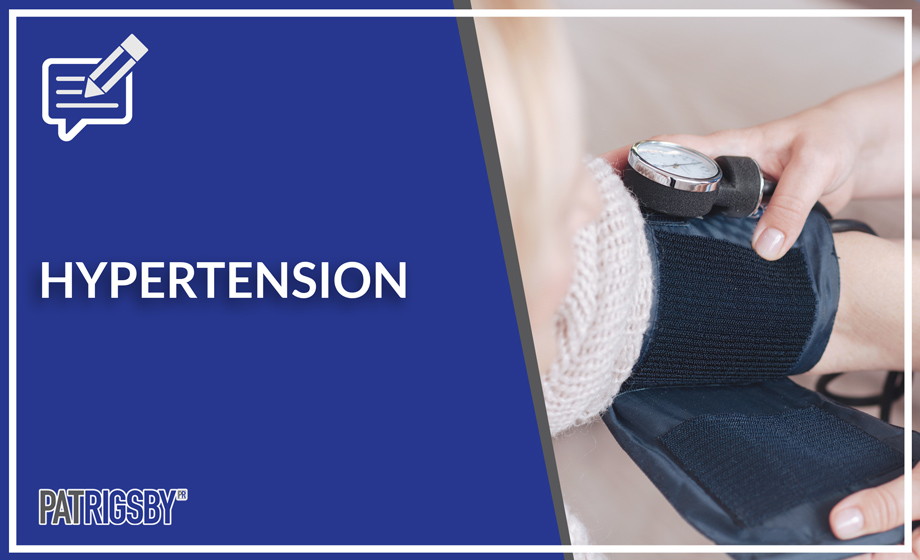By: Igor Klibanov, B.A. (Spec. Hons.), CTT, RTP
Meet George. He’s a 47-year-old sales associate at a health food store. He started working with me because he had high blood pressure. Really high. His average blood pressure was 154/103 when he started working with me. And it’s been that way since about 2006-2007.
At the end of 12 weeks, we were able to drop his blood pressure to an average of 135/88.
And along with all that, there was a dramatic change in his lifestyle:
- He has more energy
- His outlook is better
- He can handle stress better
- His doctor is no longer on him to get on his medications.
So in this article, I’ll talk about:
- How the high blood pressure was affecting George
- What we found during our assessment of George
- What he has tried in the past to bring down his blood pressure
- A week-by-week breakdown of the exact exercise, nutrition and supplementation strategies we used to drop his blood pressure
- A “post-mortem” on what we could have done to get even better results
But before we do, I shot a quick video with George, and if you want to hear George tell his own story, you can check out this 6:41 minute video here.
As a fitness professional, you always want the best possible results for your clients. Firstly, because you got into this career to change lives. And secondly, because good service is good business, which can lead to referrals.
How the High Blood Pressure Was Affecting George
Even when everything was going fine in George’s life, the blood pressure was causing a lot of stress and anxiety. He always felt “edgy.” Small things would “set him off.”
And overall, his enjoyment of life was limited, compared to before he had high blood pressure. It was very difficult to wind down after a long day of sleep, and the sleep was affected as well (he wasn’t sleeping very well).
And you can imagine, being anxious all the time took a lot of energy out of him. So the vicious cycle continued. He was feeling anxious, which is obviously stressful, which raised his blood pressure. But also, the blood pressure was high, which made him anxious.
The Assessment
As with all of our clients, we start with measurements. I had George fill out my thorough, 321-symptom questionnaire, and we also did a biosignature analysis on him.
Here were our initial findings:
- Out of 16 sections, his highest score was the blood sugar section (he scored 21/39. Ideal is 0/39), followed by essential fatty acids (the score was 10/22. Again, ideal is 0/22), and then, adrenals (score was 31/78). To us, this meant that his high blood pressure was driven by a poor diet, as well as high stress levels.
- There was pain in the left knee
- There was lower back pain when leaning forward
- He was taking A LOT of supplements. Working in a health food store, you get everything at a discount, plus tons of free samples. How can you resist? He was taking CoQ10, a multi-vitamin, a B complex, fish oil, Cardio Mag, turmeric, cocoa powder, testoboost, probiotics, enzymes, sleeping pills and magnesium citrate.
- 3 highest areas in body fat: belly (21 mm), love handle (15 mm), and ribs (15 mm as well)
- Waist circumference: 97 cm (38.2 inches)
In addition to that, George was to measure his blood pressure first thing in the morning, last thing before bed, before exercise, and immediately after exercise.
Each week, George would keep this information in an Excel file, and at the end of the week, he would send it to me for analysis. This goes back to what I constantly talk about, and have outlined in great detail in my article on the Importance of Measurements.
What George Has Tried in the Past to Lower His Blood Pressure
Of course, with a blood pressure that high, his doctor completely freaked out, and wanted to put him on medications immediately (this was many years ago). George resisted doctor’s orders for about 9 years, until he decided to try the medications. They knocked his energy levels right out. They were already low to begin with, and the medication made it even lower.
So he decided to take himself off the medication. The doctor instead put him on water pills (diuretics), which were much better tolerated.
George has also been a more or less regular exerciser for 30 years, and despite that, the blood pressure was high (mind you, he wasn’t doing exercise targeted at lowering blood pressure, the way I describe in my comprehensive article on exercise for high blood pressure).
He’s also tried dietary changes, and obviously, a lot of supplements.
Despite all those changes, his blood pressure was crazy high (as noted earlier, on average, 154/103).
A Week-By-Week Breakdown of the Strategies We Used to Drop George’s Blood Pressure
Before We Started
There was a 3-week gap between when we did George’s initial assessment, and when we actually started his program. We were just waiting for George to see his doctor, to give him an update of what he plans to do.
We didn’t start until we had the doctor’s “all clear.”
During this time, I simply had George make one tiny little change:
In addition to his regular exercise routine, he just had to do 6 sets of isometric squats, to failure, with 2 minutes rest in between sets, 3 times per week. George’s sets lasted between 20 and 40 seconds. This is similar to the protocol that I outline in my article on The Secret Exercise for High Blood Pressure.
I instructed him not to make any other changes during this time. No changes in nutrition, no changes in supplements.
In the week leading up to our first session:
- George’s highest systolic blood pressure was 158, and it only happened once, out of 14 measurements (7 mornings, and 7 evenings).
- George’s highest diastolic blood pressure was 104, and it only happened 3 times, out of 14 measurements. All the other measurements were below 104.
- George’s lowest systolic blood pressure was 145
- George’s lowest diastolic blood pressure was 96
- George’s average blood pressure was 150/101
So not a huge drop, but large enough to have a tangible effect. And considering we made absolutely no other changes, this isn’t bad.
Weeks 1-4
After an analysis of George’s food log, I noticed a lot of energy drinks. The main ingredient in energy drinks is caffeine. Caffeine has an effect of vasoconstriction. It makes the muscles surrounding blood vessels contract. Contraction of those muscles causes high blood pressure.
Guess what I had him do: cut out the energy drinks.
In addition to that, we introduced an exercise routine specifically aimed at lowering blood pressure. Which is quite different than an exercise routine aimed at fat loss, or toning, or strengthening, or anything else. Just as a doctor wouldn’t give the same medication for different conditions, we don’t use the same exercise program for different goals.
I elaborate on the specifics of exercise for high blood pressure, in my massive, 3200-word article on exercise for high blood pressure.
What were the results of this?
- The highest systolic blood pressure over this 1-week period was 154, and it only happened once out of 14 measurements (7 mornings, 7 evenings).
- The highest diastolic blood pressure was 104, and it only happened twice out of 14 measurements.
- The lowest systolic blood pressure was 120, and it happened once
- The lowest diastolic blood pressure was 90, and it happened once
- The average blood pressure over this 1-week period was 147/98
We stuck with this strategy for the next 4 weeks, because his blood pressure was dropping steadily, so there was no reason to change anything.
Here are his results after week 4:
- The highest systolic blood pressure over this 1-week period was 152, and it only happened once out of 14 measurements (7 mornings, 7 evenings).
- The highest diastolic blood pressure was 101, and it only happened three times out of 14 measurements.
- The lowest systolic blood pressure was 140, and it happened three times
- The lowest diastolic blood pressure was 83, and it happened once
- The average blood pressure over this 1-week period was 144/95
But this is pretty similar to his blood pressure from week 3. Which means that he has now been “stuck” at this level for 2 weeks. And his blood pressure was still too high. It was now time to make additional changes.
Weeks 5-6
Now, I instructed George to eat more potassium-rich foods.
Interestingly enough, traditionally, sodium restriction has been the go-to dietary strategy for people with high blood pressure. But more and more evidence has been showing that sodium restriction has a blood pressure-lowering effect of only 4-5 mmHg. Every little bit helps, but it’s not that much.
However, according to other evidence, potassium augmentation has a more pronounced effect on blood pressure.
So why didn’t I instruct George to both increase potassium, and decrease sodium? Why just the increase in potassium? Because by simply adding in more potassium-rich foods, sodium-rich foods automatically decrease. However, the psychological effect of adding something in is much easier than removing something. If I told you not to eat something, you’d want to eat it. But if I gave you a quota of how much to eat of good foods, that “pushes” the “bad stuff” out of your diet.
So now, what did I ask George to eat? I’m sure you’re thinking “bananas.” I’m not sure why bananas are the poster-child for potassium. Foods like parsley, sun-dried tomatoes, garlic, potatoes, and others are much higher in potassium than bananas. For instance, 100 grams of a banana has about 358 mg of potassium. By comparison, 100 grams of a potato has 421 mg of potassium. And sun-dried tomatoes? In 100 grams, there are 1565 mg. Take that, bananas!
So I gave George a quota: he had to eat 3 potassium-rich foods per day, at least. If he wanted more, he could have more.
What I secretly wanted was to get his potassium intake up to 4700 mg per day. That’s the recommended amount by the American Heart Association. That amount, however, is difficult to get through food alone. So, I recommended George take Genestra’s potassium product (which, I have no financial affiliation with). It’s the only one on the market that I’m aware of that has 250 mg per capsule. Most of the others are around 100 mg/capsule.
The results:
- The highest systolic blood pressure was 150, and it only happened once
- The highest diastolic blood pressure was 104, and it only happened once
- The lowest systolic blood pressure was 135
- The lowest diastolic blood pressure was 82
- The average blood pressure was 142/92
Weeks 7-8
At this point, I instructed George to add another small exercise to his routine: he was to hold a hand-grip dynamometer, with about 30% of his strength, for 4 sets of 2 minutes, with 2 minutes of rest between sets, 3 times per week.
Again, the rationale behind this kind of exercise is covered in my article on exercise for high blood pressure.
The results:
- George’s highest systolic blood pressure was 146, and it only happened once.
- George’s highest diastolic blood pressure was 97, and that only happened once
- George’s lowest systolic blood pressure was 132
- George’s lowest diastolic blood pressure was 83
- George’s average blood pressure was 141/89
Week 9-10
By now, we’re sitting on the borderline of high blood pressure, and no longer high blood pressure. The official mark of high blood pressure is either a systolic blood pressure of 140, or a diastolic blood pressure of 90. We were now very close to going from “hypertension” to “pre-hypertension.”
So in this week, we added magnesium glycinate. We started with Inno-Vite’s product, at 500 mg, and continued to raise it by 250-500 mg every 2 days, while monitoring for symptoms of toxicity. We saw absolutely no changes in George’s blood pressure, until we reached 2000 mg. That’s a pretty high dose, indicating a significant magnesium deficiency.
Why did we choose to focus on magnesium in this week? How does magnesium affect blood pressure? Magnesium is a mineral that relaxes muscles. So if we would be able to relax the muscles surrounding blood vessels, his blood pressure would drop. In medical terms, magnesium is both a natural “calcium channel blocker”, as well as a “beta blocker”, and a vasodilator.
Sure enough, it worked.
The results:
- George’s highest systolic blood pressure was 146
- George’s highest diastolic blood pressure was 91
- George’s lowest systolic blood pressure was 127
- George’s lowest systolic blood pressure was 81
- George’s average blood pressure was 135/87
And this marks the first week in 10 years that George was officially no longer “hypertensive.” He no longer met the diagnostic criteria to be considered having “high blood pressure.” It certainly isn’t ideal yet, but way better than what he started with.
Now, if you’re wondering “but I’m a fitness professional. I can’t make recommendations on nutrition and supplements.” Sure, you can’t recommend, and you can’t make health claims. But you can cite evidence, and you can state facts. For instance, you can not say “you should take magnesium, because it will lower your blood pressure.” But instead you can say “studies have shown that magnesium lowers blood pressure.” You can also say “I have one client whose blood pressure dropped when they started taking magnesium.”
You’re not making health claims. You’re not giving your opinion. You’re simply stating facts.
Weeks 11 and 12
George had continued to increase his dose of magnesium, up as high as 3000 mg/day. However, now, he also added 3-4 cups per day of hibiscus tea, as well as 3-4 cups per day of red beet crystals.
However, due to an emergency with his mother that he had to take care of, stress levels were particularly high, and nutrition wasn’t that great, so we had a slight regression.
The results:
- George’s highest systolic blood pressure was 145
- George’s highest diastolic blood pressure was 97
- George’s lowest systolic blood pressure was 128
- George’s lowest diastolic blood pressure was 84
- George’s average blood pressure was 136/90
So on the surface, it looks like a regression, but we have to take into account the added element of the extra stress with his mother. Ordinarily, under a stressful situation, George’s blood pressure would rise a lot more than it did. The fact that his blood pressure didn’t rise that high under this situation is a small victory. It means that even though the stress was there, it was less damaging on his body than if he hadn’t been supplementing, and exercising.
Yes, there’s more work to do, to get his blood pressure even better, but not a bad drop in 12 weeks.
What Could Have Gone Better
Point #1: Magnesium
In retrospect, I would have introduced magnesium supplementation earlier in the process. The other thing that I would have done differently is be a bit more aggressive with the dosages. Once we got to 1000 mg/day, I started getting nervous, even though George was feeling just fine. At that point, I was about to conclude that the magnesium isn’t working for George, and was about to drop it altogether.
George suggested trying higher dosages at his own risk. I told him that was his choice, and to just monitor for symptoms of toxicity (like diarrhea, low heart rate, mental sluggishness, etc.). In fact, George didn’t experience a blood pressure-lowering effect until he got to 2000 mg. And that was the largest effect of any other strategy that we used. If I had “wimped out” at 1000 mg, George would have missed out on some potent blood pressure lowering effects.
Point #2: Food Sensitivities
Around week 4, I suggested to George to get tested for food sensitivities (which is not the same as allergies). I thought that might have a strong effect on his blood pressure, because if he’s constantly eating foods that may be healthy, but he’s sensitive to, it could be raising his cortisol, which could in turn raise his blood pressure.
Unfortunately it took 7 weeks to get the results of his test, which was way too long. If I was to do it again, I would have done this earlier in the process.
Point #3: Compliance
George’s compliance to my nutrition and exercise recommendations was about 70%. So he missed about 30% of the workouts, and ate/drank things he wasn’t supposed to 30% more time than he should have.
It comes as no surprise that better compliance would get better results.
Point #4: Massage, Acupuncture and Meditation
This is more a point of curiosity, whether any of those would have a measurable blood pressure-lowering effect. We did not experiment with those during out 12 weeks together.
So there you have it. The exact week-by-week breakdown of how we turned around George’s high blood pressure. All these numbers and analysis are nice, but how does it translate to his quality of life?
- He now has more energy
- He’s able to relax and unwind better after a long day at work
- He can sleep better
- He’s better with the people around him
- He can take care of his mother better
And as a fitness professional, those are the exact reasons we got into this industry in the first place. Happy clients are referring clients, and sure enough, George shared this article all over his social media.
P.S. – 6-Weeks of Coaching…Free.
Get a surge of new clients and revenue over the next 6 Weeks with ZERO FEE and no obligation to continue?
If you’re a current business owner who wants to add 50K or more in annual revenue over the next 12 month, you can Test Drive our coaching program for 6 Weeks with no fee or even an obligation to continue as a way to demonstrate how we can help you grow your business.
No strings attached. No obligation. You get our best coaching & tools…and hopefully, you’ll love it enough that you want to keep working together.
Would you be interested in discussing?
If so, email me here with ‘interested’ in subject line and we’ll set up a chat.








